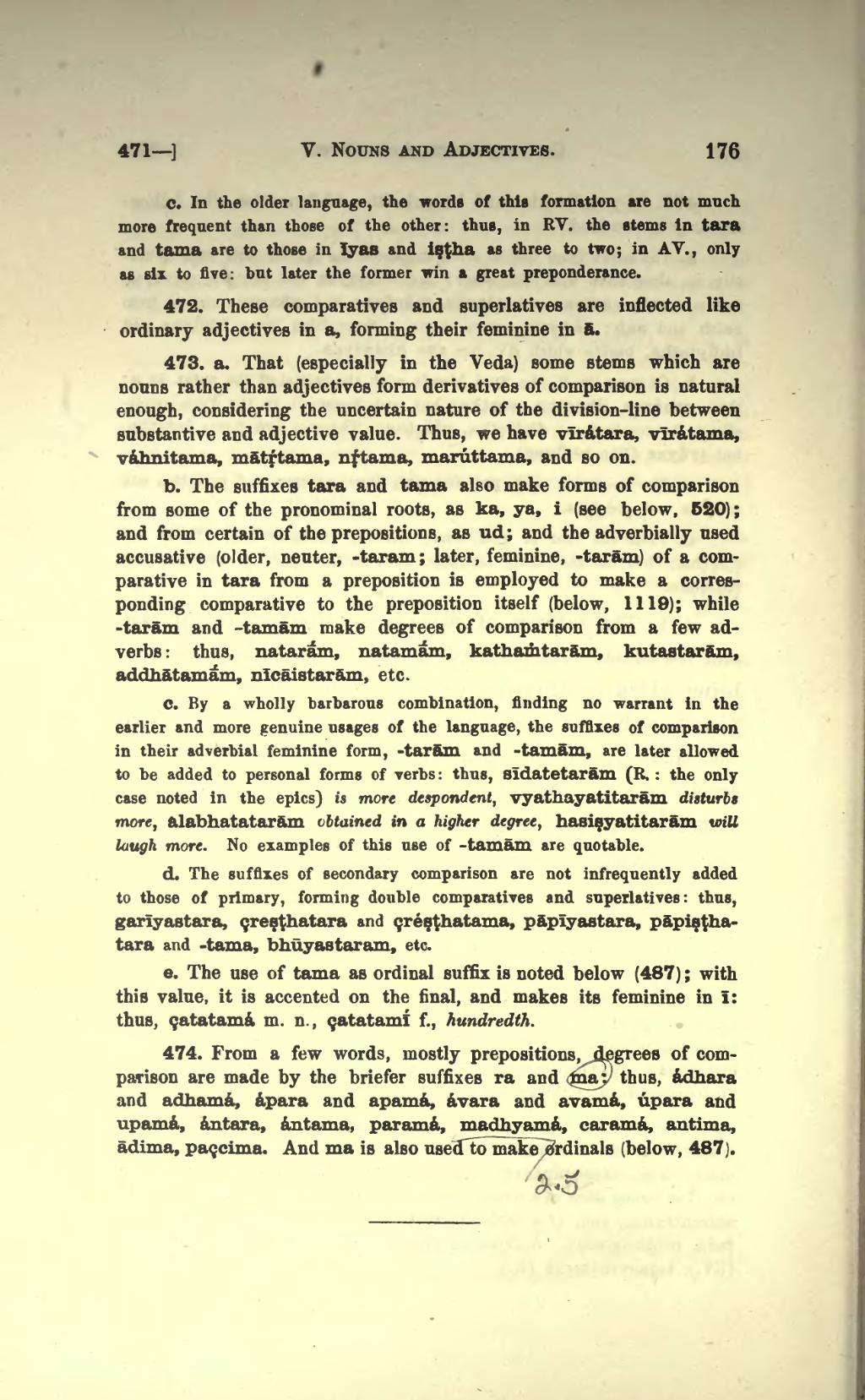c. In the older language, the words of this formation are not much more frequent than those of the other: thus, in RV. the stems in tara and tama are to those in īyas and iṣṭha as three to two; in AV., only as six to five: but later the former win a great preponderance.
472. These comparatives and superlatives are inflected like ordinary adjectives in a, forming their feminine in ā.
473. a. That (especially in the Veda) some stems which are nouns rather than adjectives form derivatives of comparison is natural enough, considering the uncertain nature of the division-line between substantive and adjective value. Thus, we have vīrátara, vīrátama, váhnitama, mātṛ́tama, nṛ́tama, marúttama, and so on.
b. The suffixes tara and tama also make forms of comparison from some of the pronominal roots, as ka, ya, i (see below, 520); and from certain of the prepositions, as ud; and the adverbially used accusative (older, neuter, -taram; later, feminine, -tarām) of a comparative in tara from a preposition is employed to make a corresponding comparative to the preposition itself (below, 1119); while -tarām and -tamām make degrees of comparison from a few adverbs: thus, natarā́m, natamā́m, kathaṁtarām, kutastarām, addhātamā́m, nīcāistarām, etc.
c. By a wholly barbarous combination, finding no warrant in the earlier and more genuine usages of the language, the suffixes of comparison in their adverbial feminine form, -tarām and -tamām, are later allowed to be added to personal forms of verbs: thus, sīdatetarām (R.: the only case noted in the epics) is more despondent, vyathayatitarām disturbs more, alabhatatarām obtained in a higher degree, hasiṣyatitarām will laugh more. No examples of this use of -tamām are quotable.
d. The suffixes of secondary comparison are not infrequently added to those of primary, forming double comparatives and superlatives: thus, garīyastara, çreṣṭhatara and çréṣṭhatama, pāpīyastara, pāpiṣṭhatara and -tama, bhūyastaram, etc.
a. The use of tama as ordinal suffix is noted below (487); with this value, it is accented on the final, and makes its feminine in ī: thus, çatatamá m. n., çatatamī́ f., hundredth.
474. From a few words, mostly prepositions, degrees of comparison are made by the briefer suffixes ra and ma: thus, ádhara and adhamá, ápara and apamá, ávara and avamá, úpara and upamá, ántara, ántama, paramá, madhyamá, caramá, antima, ādima, paçcima. And ma is also used to make ordinals (below, 487).
